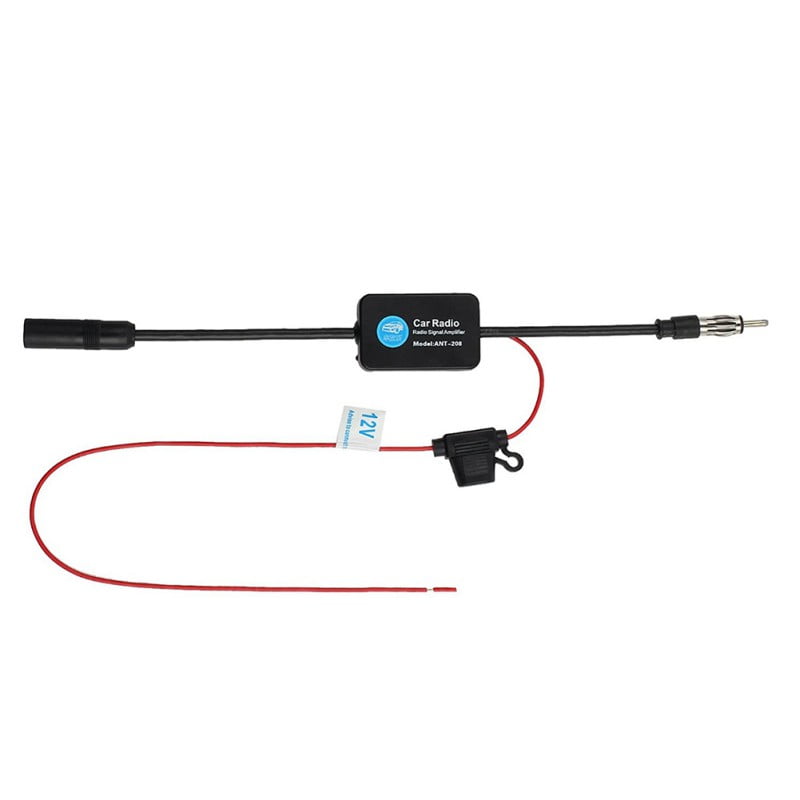
Nevertheless, during the broadcast, the radio station modulates the electromagnetic carrier wave to hold audio. Thus, we would not be able to have multiple radio channels. Essentially, if they disclosed signals at the same frequency, radio receivers would not distinguish between them. All radio stations broadcast radio carrier waves in a frequency that is unique to them. To understand how the FM antenna booster works, we must realize how FM radio waves and receivers function. Effectively, this will make the FM antenna booster more efficient in boosting specified signals.Īn antenna that receives radio signals – often has a booster built into it. Thus, we must include a mechanism that weeds out unwanted calls and noise in the amplifier's design. Most FM antenna boosters amplify signals indiscriminately. Often, people also refer to FM Antenna boosters as FM amplifiers. In turn, it enables you to improve how well an FM receiver gets a radio signal. " width="624" height="1000" /> Radio tower iconĪn FM antenna amplifier is a device that allows you to increase the FM signal strength emanating from an FM transmitter. Nevertheless, we hope that you’ve found this guide to be helpful. Once you understand the fundamentals of how these circuit designs work, you can eventually start designing and building more complex electronics. Furthermore, it’s an excellent introduction to electronics engineering, especially for self-taught students. Much like the hearing aid circuit, it’s simple enough to construct and incredibly useful. FM broadcasting antennas that often feature built-in signal boosters Summary FM antenna boosters are one of the best electronics projects for beginners. Regardless of the antenna types you use, you must balance these properties in order to find the best FM signal booster. Finally, you should consider the make-quality and match it against the price. Omnidirectional antennas are more desirable than single-direction antennas. It describes the radius at which the FM antenna booster can emit signals and waves. Directivity is another specification that’s worth considering.

Gain describes an antenna’s ability to emit a signal to a target. A high gain indoor FM antenna booster is far more preferable to a low gain. Furthermore, you must pay attention to the gain. The amplifier should be able to receive signals from a long distance. What should I look for in an FM antenna booster? When assessing an FM antenna booster for purchase, the first thing you need to pay attention to is the radio signal reception power of the FM antenna booster. In-door FM antenna boosters can cost you anywhere between $20 and $50. For instance, some of the best FM antenna boosters for motor vehicles cost between $14 and $20. How much does an FM antenna booster cost? The price of an FM antenna booster is largely based on its build quality, wattage, and purpose.

A 1000-watt FM antenna booster can send out signals that will reach up to 20 km (12 miles). Generally, an FM station can send radio waves out as far as 50 to 60 km (30 to 40 miles). Since not all FM antenna boosters and amplifiers are the same, how far one device can boost signals may not be the same for others.
#AM FM ANTENNA BOOSTER FOR HOME STEREO TV#
FAQs Pre-amplifier for TV and FM signals Source: Wikimedia Commons How far can an FM antenna booster cover? How far an FM antenna booster can cover is largely based on the device construction.

Furthermore, you’ll be able to use what you’ve learned from this project to build other types of radiofrequency boosters and amplifiers.

Eventually, you’ll be able to make it more sophisticated by designing a PCB layout and using it to construct your homemade antenna booster. You may build it on a breadboard or just using wires.
#AM FM ANTENNA BOOSTER FOR HOME STEREO HOW TO#
How To Build Your Own FM Antenna Booster?Ĭonnect the sixth capacitor to the 12V power supply Next, run a parallel circuit from the second resistor and connect the fourth and fifth capacitors in serial Again, add another inner parallel circuit with the second inductor and variable connector, which will also connect to the ground side of the main circuit Finally, connect the fifth capacitor (C5) to the output antenna As you’re building the circuit, make sure to pay careful attention to the steps as well as the schematics.


 0 kommentar(er)
0 kommentar(er)
